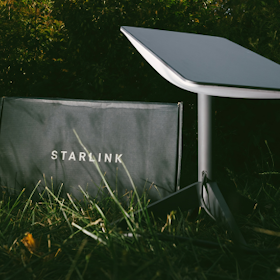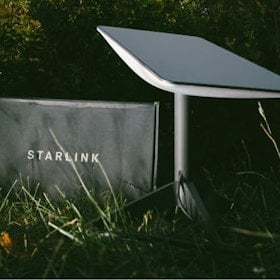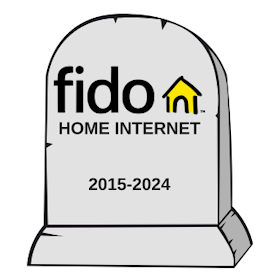
Adding a Wi-Fi extender can give your home network the boost it needs to offer high-speed coverage in every room. The best Wi-Fi extenders are the:
- TP-Link RE650: Best overall
- Nest Wi-Fi: Best mesh solution
- TP-Link RE505X: Best for Wi-Fi 6
- D-Link DAPX1870: Best user experience
- NETGEAR X7000: Best for premium buyers
With these extenders, you can improve the connection in areas where service can be spotty, like basements, upper floors, or backyards. Let’s dive into what places these models at the top of our list.
How we picked the best Wi-Fi extenders
-
Price & value
We ensured you’re getting the most bang for your buck without sacrificing performance. -
Coverage
We looked at whether the coverage area made sense for most. -
Speed
We evaluated whether or not these extenders would enhance your home internet experience.
Best Wi-Fi extenders
| TP-Link RE650 | Nest Wi-Fi | TP-Link RE505X | D-Link DAP-X1870 | NETGEAR X7000 | |
|---|---|---|---|---|---|
| Category | Overall | Mesh | Wi-Fi 6 | Seamless connection | Premium |
| Coverage | 14,000 sq. ft. | Variable | 1,500 sq. ft. | 2,000 sq. ft. | 1,800 sq. ft. |
| Speed | 2,600Mbps | 2,200Mbps | 1,200Mbps | 1,200Mbps | 1,900Mbps |
| Ethernet ports | 1 | 2 | 1 | 1 | 5 |
| Buy at Amazon | Buy at Amazon | Buy at Amazon | Buy at Amazon | Buy at Amazon |
Best Overall Wi-Fi Extender—TP-Link RE650

Pros & cons
- Excellent range
- Exceptionally fast
- Easy to use
- Only one Ethernet port
- Bulky footprint for a plug-in extender
The TP-Link RE650 takes our top pick as the best Wi-Fi extender thanks to its combination of exceptional value and powerful performance. With an 880MHz dual-core processor, four external antennas, a Gigabit Ethernet port, and MU-MIMO support to communicate with four devices simultaneously, the RE650 is an excellent choice.
What really separates this device from other options is being able to cover a large home with AC2600 speeds (1733Mbps on the 5Ghz band, 800Mbps on the 2.4Ghz band) without additional equipment. Both bands are always available through the RE650, even if your primary router drops one of them. Having both bands available at their high speeds can be the difference between a smart TV that would normally be out of range and flawlessly streaming a Netflix show at HD or 4K resolution.
It also features a simple quality of life boost with its Intelligent Signal Indicator. If this light is blue, your extender is working as expected and boosting your Wi-Fi stability and capability. If the light is red, you’ll want to move your RE650 closer to your router.
Best Mesh Wi-Fi Solution—Nest Wi-Fi

Pros & cons
- Built-in Google Assistant
- Simple setup
- Minimal footprint
- Easily scalable
- May need multiple nodes to cover the whole home
- Not great smart speaker replacements
Nest Wi-Fi provides 2,200 square feet of coverage from its router and an additional 1,600 square feet per node. It’s an easily scalable mesh Wi-Fi solution that uses a combination of routers and nodes to expand your coverage across a considerable range.
With two Gigabit Ethernet points on the Nest router, you have more wired connection possibilities than most of the other entries on this list, and it’s faster than most too. In this collection, it trails only the TP-Link RE650 in regard to speed. Once you add enough nodes, you can provide great signal quality across your home. YouTube, Disney+, or your favourite streaming service will easily play at the highest possible resolution thanks to your network strength.
Further separating Nest Wi-Fi from the pack is its intelligence. Like other options on this list, it’ll use context to decide whether to deliver connectivity on one or both of the 5Ghz and 2.4Ghz bands, but it also features the Google Assistant. Each Nest Wi-Fi router and node features a speaker and far-field mic, making managing your smart devices and home easier than ever.
Best Wi-Fi 6 Extender—TP-Link RE505X

Pros & cons
- Simple setup
- Strong 5Ghz performance
- Strong Wi-Fi 6 performance
- Bulky for a plug-in extender
- Requires a OneMesh router for full functionality
A budget-friendly sibling to our top pick, the TP-Link RE505X offers reliable and consistent Wi-Fi 6 extension. Wi-Fi 6’s most significant advantages are its ability to give you a more stable connection and faster speeds. The RE505X provides a vast coverage area with 1200Mbps speeds on 5Ghz and 300Mbps on 2.4Ghz with smart swaps between the two bands.
TP-Link’s RE505X extends your Wi-Fi network using the same network name and password as your ISP’s service to make staying connected intuitive and straightforward. Its two antennas are fewer than our top pick’s four, but they still provide plenty of coverage. Plus, the TP-Link RE505X features a Gigabit Ethernet port for wired connectivity. The combination of Wi-Fi 6 and an Ethernet port is great for gamers and entertainment consumers alike.
If you happen to own a OneMesh router already, then the RE505X becomes even better as it will create a mesh network with that router for better coverage. The devices will operate under a single network name making connecting a breeze.
Best Wi-Fi Extender for User Experience—D-Link DAP-X1870

Pros & cons
- Simple setup
- Reliable connection
- Smaller footprint than others
- May still block off a whole outlet
- Pricier than some other options
The D-Link DAPX1870 is a versatile option that can act as a Wi-Fi extender, a Wi-Fi access point, or a wireless bridge (due to its Gigabit Ethernet port). Having used a D-Link extender myself, I know that they’re super simple to set up and manage, thanks to the mobile app. The DAP-X1870 provides 1201Mbps speeds on the 5Ghz band and 574Mbps speeds on the 2.4Ghz band. This all-around extender’s range is also among the best on the market, extending your network coverage up to 2,000 square feet.
Having a connection that can hold up as you move around the house can be especially important with Zoom calls and their notorious “You’re experiencing network issues” messages. The DAP-X1870 will keep you connected where you were once encountering drop-offs, helping you avoid this problem.
Having one extended network connection makes setting up access on gaming consoles, computers, smart TVs, and other smart devices much easier. The network will also have the speed it needs with the DAP-X1870, especially on the fringes of your existing network’s range.
Best Premium Wi-Fi Extender—NETGEAR X7000

Pros & cons
- Multiple Ethernet ports
- Plenty of customizable settings
- Large footprint
- Expensive
Picking up the NETGEAR X7000 is an excellent decision if you’re looking for a Wi-Fi range extender that’s capable of providing connectivity through wireless and wired connections. It is the largest extender on the list, meaning you’ll need to have a dedicated spot to put it, but it also provides plenty of power. The smart roaming feature keeps you connected to your Wi-Fi network by automatically changing your connection from your main router to the X7000 as needed throughout your home. NETGEAR’s FastLane technology also intelligently flips between the 5Ghz and 2.4Ghz bands as needed, so the X7000 will boost your wireless connection when you need it.
What truly sets this model apart, though, is ports. While most of our other picks offer a smaller footprint, they’re limited to just one Gigabit Ethernet port. The X7000 has five ports for you to work with, offering a faster Ethernet connection on more devices. Ethernet wires offer a reliable connection to your modem, avoiding the potential interference issues found on wireless connections. It’s also the preferred connection type for gaming on computers or consoles.
That’s not to say that the wireless speeds on the X7000 are slow. In fact, it’s one of the fastest in our top picks, reaching 1300Mbps on the 5Ghz band and 600Mbps on the 2.4Ghz. Finding the space to put this extender will grant you plenty of speed, coverage, and ports to make your home network more capable.
Upgrade your internet
Now that you have the perfect Wi-Fi extender picked out, make sure you’re using an internet service provider and plan that allows you to leverage its capabilities.
What to Look for in a Wi-Fi Extender
Range
If you’re buying a Wi-Fi extender to extend your network’s reach, you want to make sure it has the coverage range you need. Most extenders will list their coverage range in square feet, so make sure to measure the distance that you’re trying to cover before purchasing an extender. Your signal strength will always be better the closer you are to your router, so you’ll want to position the extender close enough to your main router and close enough to your dead zones to make the most out of it. If you have a vast space to cover, you’ll likely be best off with a scalable mesh system.
Performance
If you’re experiencing slow internet speeds, an extender may help. With that said, your internet service provider (ISP) plan has a maximum speed, but so do extenders. While many extenders offer maximum speeds that exceed most home internet plans, check to ensure that your extender uses a modern speed rating that won’t leave you frustrated with buffering videos and poor image quality.
Ease of use
You want an extender to make your life easier, not harder. Finding one that provides a steady connection with as few dead zones as possible is ideal. Additionally, having a mobile app, extra ports, and other quality of life features like a simple setup process or indicator that your connection is boosting properly can significantly improve your experience using it.
What's the difference between a Wi-Fi extender and a Wi-Fi booster?
These terms seem interchangeable, but they can have differences. The biggest thing you’ll want to look out for is the word “repeater.” Extenders boost the existing signal, while a Wi-Fi repeater mimics your existing signal. You can learn even more with our Wi-Fi booster vs. Wi-Fi extender guide.
Related Articles
Find Better Internet and Phone Plans
Hundreds of internet plans unpacked. All the facts. No surprises.
Internet Providers by Provinces and Territories
- Internet in Alberta
- Internet in British Columbia
- Internet in Manitoba
- Internet in New Brunswick
- Internet in Newfoundland and Labrador
- Internet in Northwest Territories
- Internet in Nova Scotia
- Internet in Nunavut
- Internet in Ontario
- Internet in Prince Edward Island
- Internet in Quebec
- Internet in Saskatchewan
- Internet in Yukon Territory











































